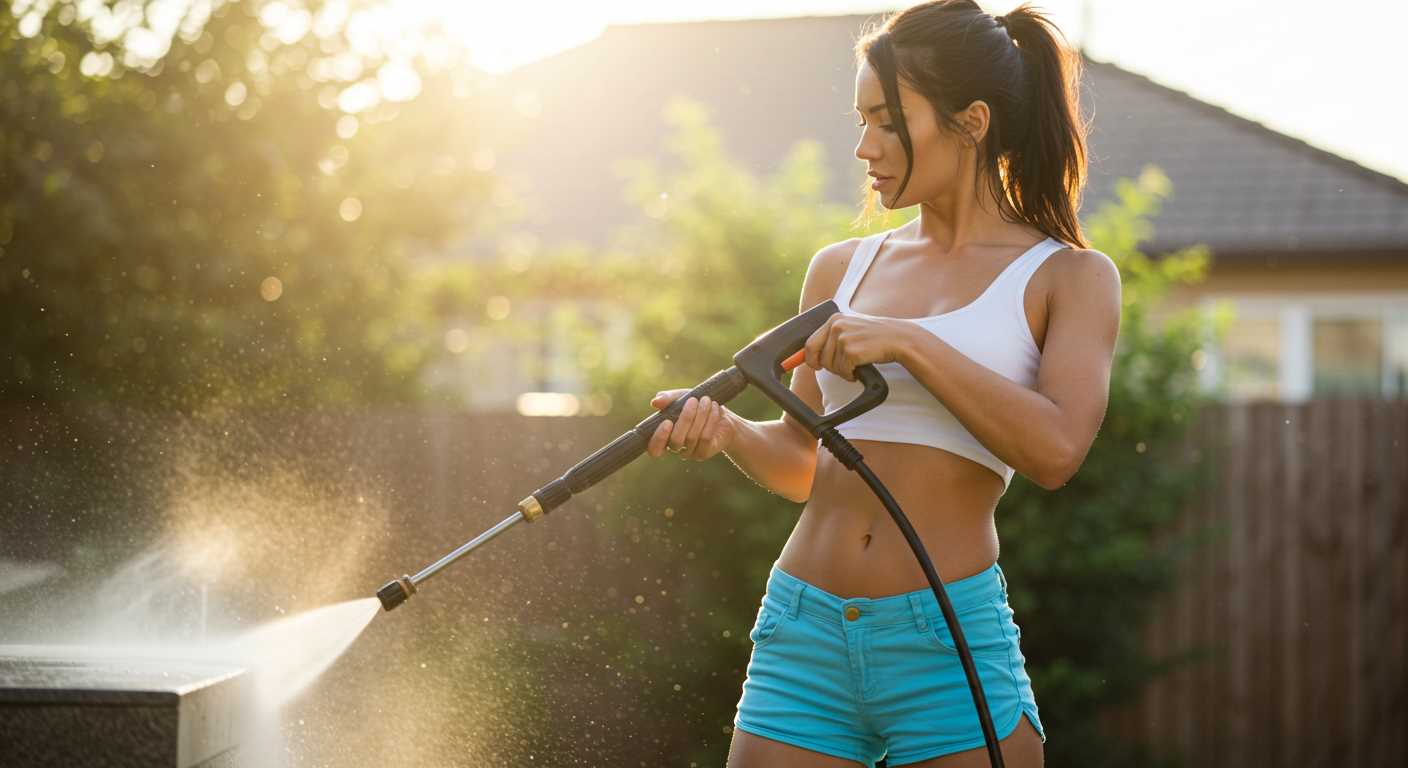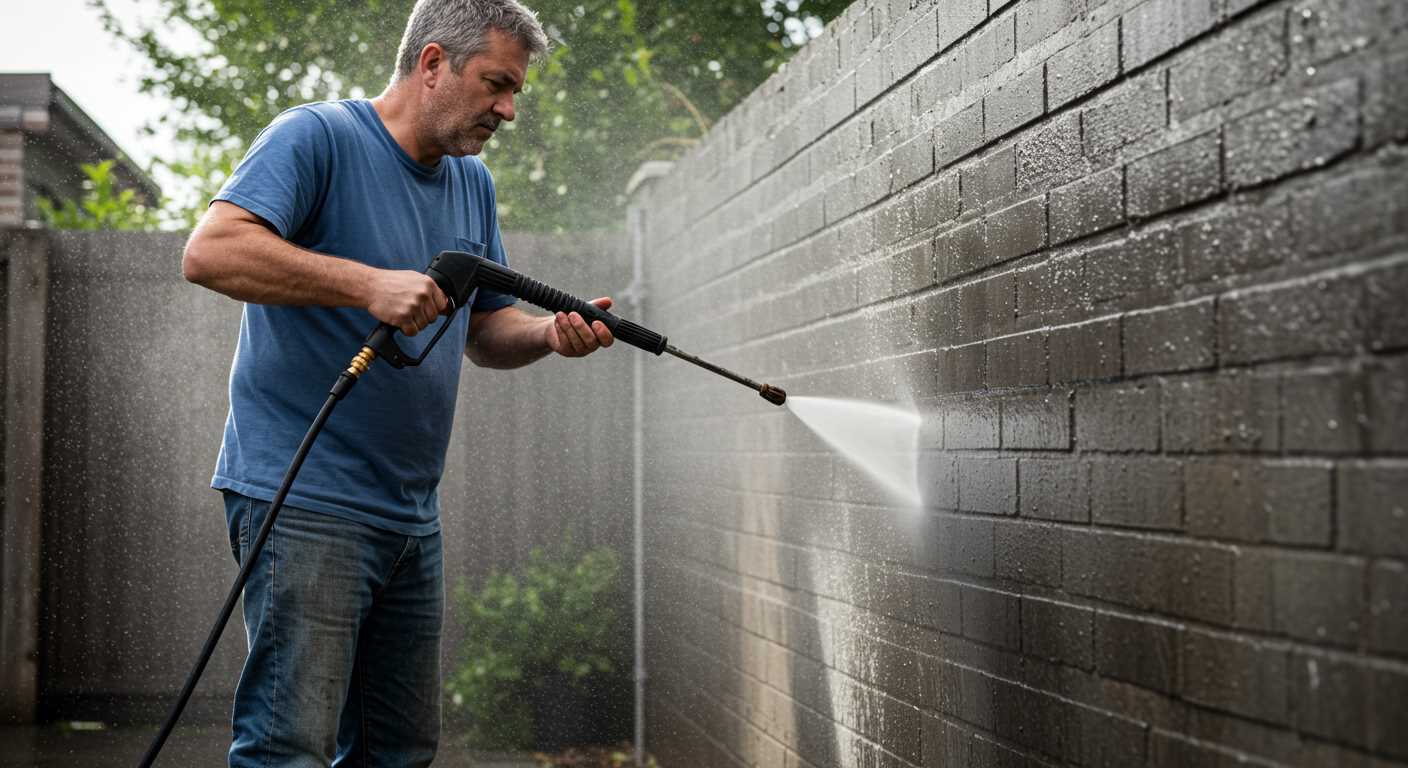

Begin with a mixture of warm water and a mild soap. A simple bucket of soapy water serves as an ideal starting point. Use a stiff-bristled broom or a scrub brush, ensuring to address any crevices or stubborn spots effectively. This method meticulously removes loose dirt and grime, providing a foundation for further cleansing techniques.
For deeper stains, a paste made of baking soda and water proves highly beneficial. Apply it directly to the affected area, let it sit for approximately 15-20 minutes, and then scrub with a brush. This natural approach not only aids in dislodging tough stains but also restores the surface’s appearance without harsh chemicals.
In cases of persistent moss or algae, a vinegar solution can be your ally. Combining equal parts white vinegar and water allows for an environmentally friendly alternative to bleach, ensuring cleaner results. Apply it directly to the affected areas, let it sit for about half an hour, and scrub afterward to achieve a sparkling finish.
Selecting the Right Cleaning Solution for Patio Stones

Start with a pH-neutral cleaner. These solutions are safe for various surfaces and won’t cause damage or discolouration. Look for labels indicating that they are biodegradable and environmentally friendly.
Recommended Cleaners

- Vinegar and Water Mixture: Combine equal parts of white vinegar and water for a basic solution. This combination effectively tackles light stains and mildew.
- Baking Soda Paste: Blend baking soda with a small amount of water to form a paste. Apply to stubborn stains, letting it sit for 15-20 minutes before scrubbing.
- Commercial Deck Cleaners: Many brands offer products specifically formulated for outdoor surfaces. Choose one suitable for the specific material of the surface.
Homemade Solutions
- Hydrogen Peroxide: This can be effective against algae and moss. Use a concentration of around 3%, apply directly, and leave for a few hours.
- Dish Soap: A few drops in a bucket of warm water can help to lift dirt and grime.
- Citrus Solvent: Natural citrus-based cleaners break down grease and grime effectively. Ensure the product is safe for your surface type.
Always test any solution on a small, inconspicuous area before proceeding. This ensures compatibility with the material and prevents unwanted damage. If a solution shows no adverse effects, apply it more broadly for optimal results. Take care to follow the manufacturer’s instructions for use and dilution.
Preparing the Area Before Cleaning Patio Stones

Firstly, clear the surface of any furniture or decorations. This creates an unobstructed workspace and prevents potential damage to items while scrubbing. Next, sweep away loose debris and dirt. A broom with stiff bristles works effectively to remove particles and moss from crevices.
Consider assessing the condition of the surface. Identify areas with stains or significant dirt build-up, which may need extra attention. Additionally, check for any cracks or loose stones, as these may require repairs prior to the cleaning process.
Cover nearby plants or flowerbeds with tarps or plastic sheets to avoid exposure to cleaning solutions. If there are any delicate surfaces nearby, take similar precautions to protect them. Ensure that drains or gutters are clear, allowing for proper water flow during and after cleaning.
Finally, gather necessary tools and supplies, such as brushes, buckets, and cloths. Ensure that all cleaning solutions are at hand, which will streamline the process and minimise downtime.
Scrubbing techniques for different types of stains
For the removal of grease stains, a stiff-bristled brush combined with a degreasing agent offers excellent results. Apply the degreaser directly to the stain, allow it to dwell for approximately 10 minutes, then scrub vigorously in circular motions. Final rinse with clean water to remove any residue.
Moss and algae require meticulous attention. Start with a diluted vinegar solution (one part vinegar to three parts water). Apply generously over affected areas, allowing the solution to penetrate for about 15 minutes. Then, use a nylon brush to scrub the surfaces effectively. Rinse thoroughly to eliminate any remnants.
For rust stains, baking soda acts as a powerful abrasive. Create a paste by mixing baking soda with a small amount of water, apply it to the rust spots, and let it sit for 30 minutes. Scrub with a wire brush, ensuring to follow the stone’s natural texture, followed by rinsing to wash away any residues.
Organic matter, such as leaf stains, can be treated with a mix of warm water and dish soap. Apply this solution directly onto the stain, agitate with a soft brush, and let it sit for at least 10 minutes. Rinse with water to clear away soap and stains.
Ink or dye stains require a careful approach. Use rubbing alcohol on a clean cloth, dab it on the stained area, and gently blot–never rub–to avoid spreading the stain. Follow this with a mixture of soap and water to cleanse the area, concluding with a rinse.
- Grease Stains: Use a degreaser and a stiff-bristled brush.
- Moss and Algae: Apply a vinegar solution, scrub with a nylon brush.
- Rust Stains: Baking soda paste, scrub with a wire brush.
- Organic Matter: Warm water and dish soap, agitate with a soft brush.
- Ink or Dye: Rubbing alcohol application, followed by soap and water.
Using natural methods for eco-friendly cleaning
Combine white vinegar and baking soda for an effective, eco-friendly solution. Mix one cup of vinegar with a half cup of baking soda in a bowl, creating a foaming paste. Apply this mixture directly to stains or grime on the surfaces, allowing it to sit for at least 30 minutes before scrubbing with a stiff brush. Rinse with warm water for best results.
Harnessing the power of citrus
Lemon juice acts as a natural bleach and disinfectant. Squeeze fresh lemons to extract juice, apply it generously to discoloured areas, and let it rest for 15 minutes before scrubbing. The citric acid lifts stains and imparts a fresh scent.
Utilising salt for tough grime
For stubborn dirt, sprinkle coarse salt over the affected area before applying vinegar. The salt creates an abrasive surface, enhancing scrubbing power. After waiting for 20 minutes, scrub with a brush and rinse thoroughly. This method not only cleans but also helps inhibit weed growth.
Dealing with mould and mildew on patio stones
A solution combining equal parts vinegar and water proves effective against mould and mildew build-up. Apply this mixture generously over affected areas. Allow it to sit for approximately 30 minutes to penetrate the spores.
Scrubbing methods
After the vinegar solution has settled, use a stiff-bristled brush to scrub the surface thoroughly. Focus on joints and crevices where these unwanted fungi tend to accumulate. Rinse the area with clean water once scrubbing is complete.
Preventative measures
Incorporating regular inspections and prompt removal of debris helps prevent mould recurrence. Creating good drainage and ensuring adequate sunlight exposure also inhibits future growth. Consider using a sealant designed for outdoor surfaces; this will provide a protective barrier against moisture retention and fungal development.
Drying and Maintaining Outdoor Surfaces Post-Cleaning
After sanitation, proper drying of surfaces is crucial. For optimal results, allow natural airflow alongside sunlight exposure. If possible, ensure ventilation and avoid direct foot traffic until fully dry. Wet environments can promote the growth of unwanted surfaces and compromise the cleanliness achieved.
Regular inspection is key for maintaining the appearance and integrity of the cleaned areas. Document any stains, discolouration, or growths that may occur over time. It’s advisable to address any issues promptly, using non-abrasive cloths for minor stains and suitable eco-friendly solutions for tougher marks.
To prevent future build-up of debris and organic matter, consider applying a sealant designed for these materials. Sealants can create a protective barrier, minimising the absorption of stains and making routine cleaning simpler.
Here’s a table highlighting regular maintenance tasks and their recommended frequency:
| Task | Frequency |
|---|---|
| Inspect for stains or growths | Monthly |
| Deep clean with a suitable solution | Every 3-6 months |
| Apply protective sealant | Annually |
By adhering to these practices, extended longevity and enhanced aesthetic will be achievable, contributing to a welcoming outdoor environment.
Preventive measures to reduce future dirt buildup
Regular maintenance significantly curtails grime accumulation on outdoor surfaces. Begin with sweeping debris and leaves weekly to prevent organic matter from decomposing and creating stains. Consider applying a sealer specifically designed for the surface type. This protective layer not only enhances aesthetics but also repels dirt and moisture penetration.
Strategic landscaping practices
Install borders or planters around high-traffic areas to limit the amount of soil or grass clippings that come in contact with the surface. Redirect water drainage away from these areas to avoid pooling, which can facilitate mould growth. Landscaping choices, such as low-maintenance ground cover, further reduce the need for intensive cleaning.
Seasonal inspections
Conduct thorough inspections each season, focusing on fissures or cracks where dirt tends to accumulate. Filling these gaps promptly prevents larger issues later. Additionally, ensure that gutters are clear to avoid overflow that can lead to mechanical wear and dirt transfer during storms.
FAQ:
What are some simple methods to clean patio stones without a pressure washer?
There are several ways to clean patio stones effectively without a pressure washer. One common method is to use a mixture of warm water and mild dish soap. First, sweep the patio to remove loose debris, then apply the soapy water with a scrub brush. For tougher stains, consider adding vinegar or baking soda to the mix. Rinse with clean water afterwards. Alternatively, a solution of water and bleach can be used for mould and mildew, but make sure to rinse thoroughly to avoid any residue.
Can vinegar be used to clean patio stones? If so, how?
Yes, vinegar can be an effective cleaning agent for patio stones. To use it, mix equal parts of white vinegar and water in a spray bottle. Spray the solution directly onto the stained areas and let it sit for about 10 to 15 minutes. After that, scrub the stones with a stiff brush to lift the stains, then rinse with clear water to remove the vinegar solution and any debris.
How do I remove algae from patio stones without a pressure washer?
To remove algae, create a solution using water and bleach—typically a ratio of 1 part bleach to 10 parts water works well. Apply the mixture onto the affected areas and let it sit for about 15 to 20 minutes. Scrub the stones with a stiff brush to dislodge the algae, and finally rinse with plenty of clean water to ensure none of the bleach remains.
Are there any eco-friendly ways to clean patio stones?
Definitely! One eco-friendly method involves using baking soda and water. Mix baking soda with a bit of water to create a paste, then apply it to the stained areas. Allow the paste to sit for about 15 minutes before scrubbing with a brush. Rinse with clean water afterward. You can also use a solution of equal parts vinegar and water, which is both natural and safe for the environment.
What tools do I need to clean patio stones without a pressure washer?
To clean patio stones without a pressure washer, you will typically need a few basic tools. These include a stiff-bristled brush or deck brush for scrubbing, a bucket for mixing cleaning solutions, and a broom for sweeping away debris. Depending on the method you choose, you might also need a spray bottle for liquids like vinegar or bleach, and rubber gloves to protect your hands from harsh chemicals.







